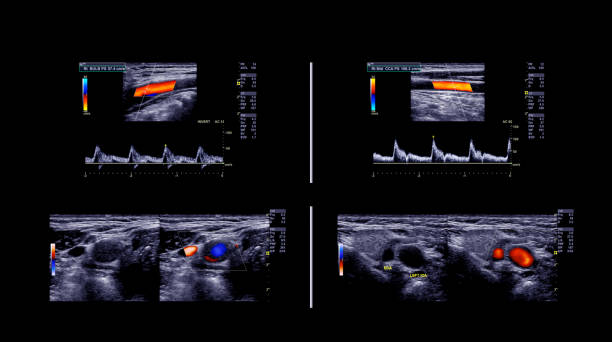
Benefits of Arterial Doppler Ultrasound in Diagnosing Peripheral Artery Disease (PAD)
Peripheral Artery Disease (PAD) is a common condition that affects millions of people worldwide. It occurs when there is a narrowing or blockage in the blood vessels that carry oxygen-rich blood to the legs and feet. Early detection and accurate diagnosis of PAD are crucial for effective management and prevention of complications. In this article, we will explore the benefits of Arterial Doppler Ultrasound, a non-invasive diagnostic technique that plays a vital role in identifying PAD.
Understanding Peripheral Artery Disease
Peripheral Artery Disease (PAD) is characterized by reduced blood flow to the legs and feet. It often leads to symptoms such as leg pain, cramping, and weakness, particularly during physical activity. If left untreated, PAD can progress and become a significant risk factor for serious complications, including non-healing wounds, infections, and even the risk of limb amputation.
Arterial Doppler Ultrasound: An Overview
Arterial Doppler Ultrasound is a diagnostic imaging technique that utilizes sound waves to evaluate blood flow in the arteries. It involves the use of a transducer that emits and receives sound waves as it is moved gently over the affected area. The reflections of sound waves are then converted into images and analyzed by healthcare professionals.
Advantages of Arterial Doppler Ultrasound in Diagnosing PAD
-
Non-invasive and Painless: Arterial Doppler Ultrasound is a non-invasive procedure that does not require any incisions or injections. Unlike other diagnostic methods, such as angiography, it is painless and well-tolerated by patients.
-
Accurate and Reliable: Arterial Doppler Ultrasound provides detailed and accurate information about blood flow patterns in the arteries. It can identify significant blockages or narrowing of blood vessels, allowing healthcare professionals to make an accurate diagnosis of PAD.
-
Early Detection: Early detection of PAD is crucial for implementing appropriate interventions to manage the condition effectively. Arterial Doppler Ultrasound can identify PAD in its early stages, even before symptoms become apparent, enabling healthcare professionals to initiate timely treatment.
-
Risk Assessment: Arterial Doppler Ultrasound helps healthcare professionals assess the severity of PAD and the risk of complications. By measuring the ankle-brachial index (ABI), which compares blood pressure in the ankle to that in the arm, it can determine the extent of arterial blockages and evaluate overall cardiovascular health.
-
Treatment Planning and Follow-up: Arterial Doppler Ultrasound plays a vital role in treatment planning and monitoring the progress of patients with PAD. It helps healthcare professionals determine the most appropriate management strategies, such as lifestyle modifications, medications, or invasive interventions like angioplasty or bypass surgery.
Conclusion
Arterial Doppler Ultrasound is a valuable diagnostic tool in detecting and managing Peripheral Artery Disease (PAD). Its non-invasive nature, accuracy, and ability to provide crucial information make it an indispensable technique in the field of vascular medicine. Early identification of PAD through Arterial Doppler Ultrasound enables timely interventions, reducing the risk of complications and improving the overall quality of life for patients.
Keywords:
- Arterial Doppler Ultrasound
- Peripheral Artery Disease diagnosis
- Non-invasive PAD detection
- Arterial blockages evaluation
- Importance of early PAD detection
Titles:
- Arterial Doppler Ultrasound: Accurate PAD Diagnosis Made Easy
- Unveiling the Power of Arterial Doppler Ultrasound in PAD Detection
- Enhancing PAD Management with Arterial Doppler Ultrasound
- Non-invasive PAD Diagnosis: The Role of Arterial Doppler Ultrasound
- Unlocking the Potential of Arterial Doppler Ultrasound in Detecting PAD